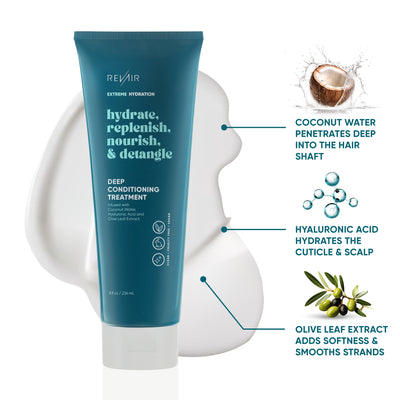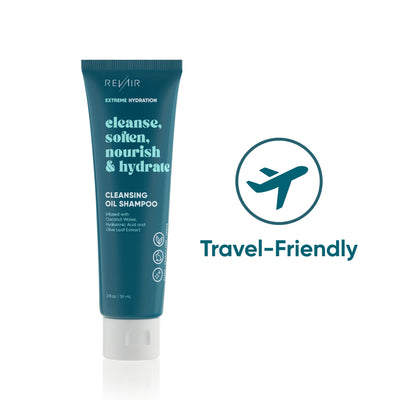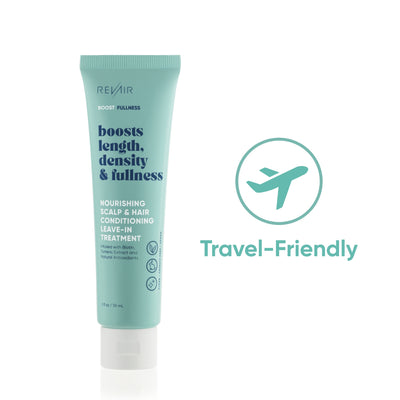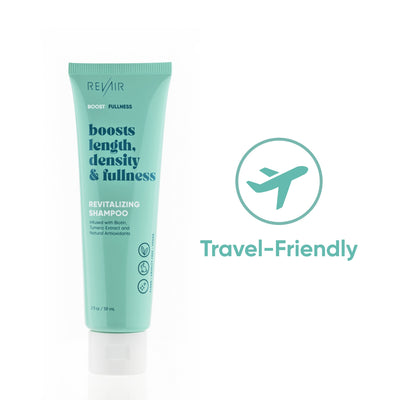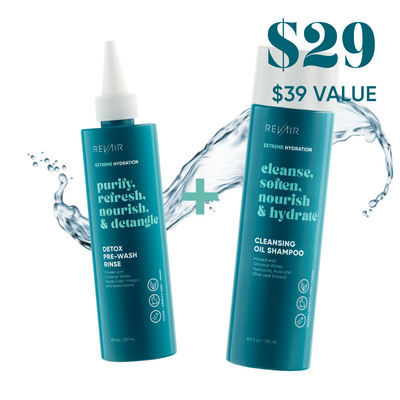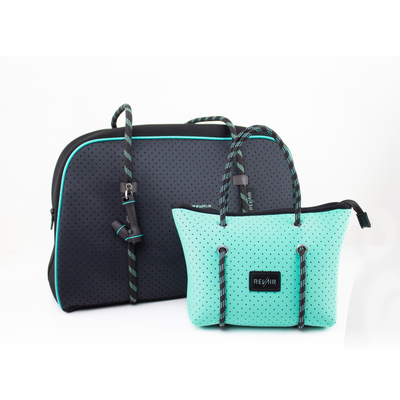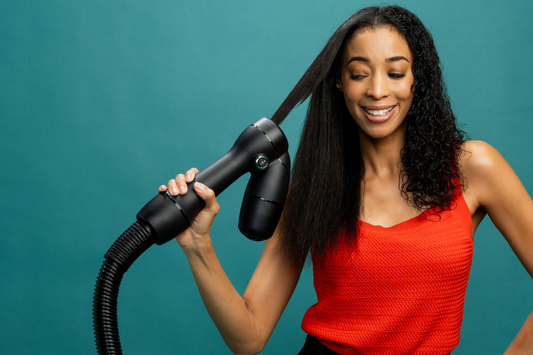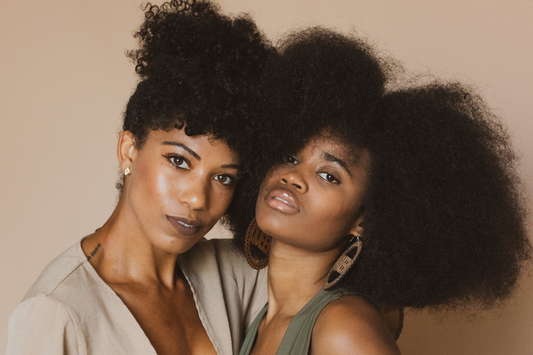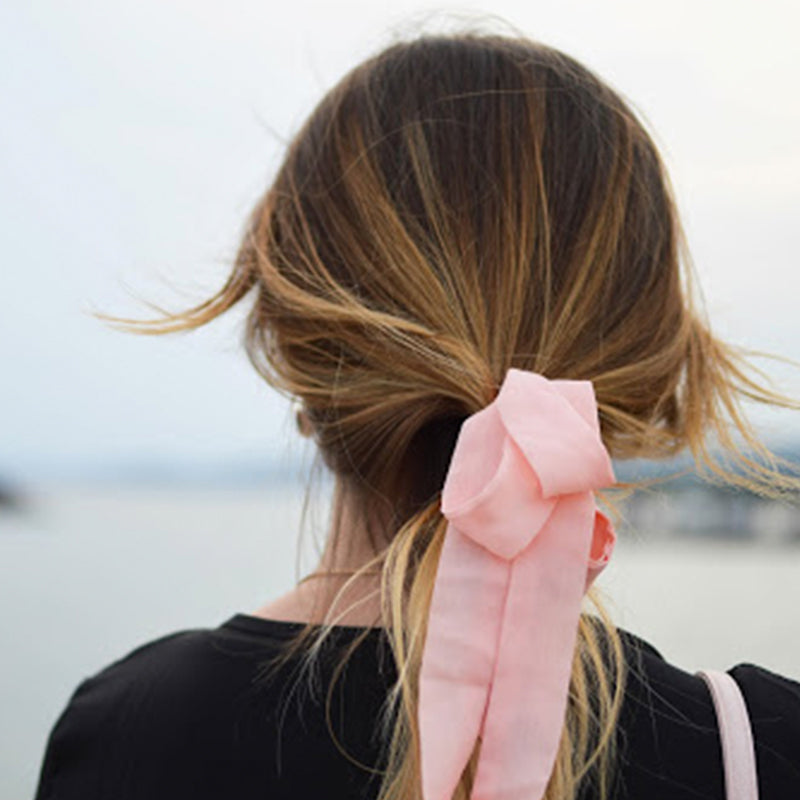
Tips for Caring for Fine Hair
Having fine hair is both a blessing and a curse. On the bright side, thinner strands do not need as much hair product to coat them, and drying and styling hair takes significantly less time than it does for a head of thick locks.
One of the best upsides? Fine hair is naturally soft, silky and smooth effortlessly.
While there are tons of benefits to having fine hair, styling and maintaining it follows a different set of rules than for those with very thick or coarse strands.
It requires a balance between maintaining moisture, body and preventing an oily or greasy appearance.
First things first: What’s the difference between fine and thin hair?
While thin and fine hair are similar sounding and often go hand in hand, these are two different traits that hair can have. “Fine” hair refers to the thickness of the strand. Having “thin” hair references the density of the hair strands, how close individual strands are to each other and how many there are overall.
It is entirely possible to have thin hair that is actually coarse in nature (the strands themselves are thick in texture), as well as to have fine hair – and a LOT of it! The two terms usually are found together on straight haired folks.
The Science Behind Fine Hair
When compared to other hair types, fine hair is the smallest in diameter. This means that there are more hairs per inch of scalp, because their smaller nature allows for more to fit in that area.
Think of this compared to thicker, coarser strands that take up a larger amount of space on the scalp – there is not as much space to fit more!
Each hair follicle on our head has an oil gland, which means that finer hair contains more oil glands than other hair types (more hair strands overall!).
Due to all of these extra oil glands, greasy or oily hair does not take long to appear. On thin hair, the hair shaft also tends to be smoother and less porous, which means that any oil sits visibly on top. This can make the hair appear even oilier than it actually is.
Washing and Styling Tips for Fine Hair
Thicker and coarser hair types typically only wash their hair one to three times a week, to maintain the moisture levels that their drier strands may need.
This is not the case for people with fine hair – who may need to wash their hair every other day, or even every day for some.
How much shampoo are you using, and what kind?
Too much of any product, even shampoo, can weigh down your hair and cause it to look limp and lifeless. Instead of applying your shampoo all over your hair from root to tip, concentrate your shampoo on the scalp and roots, because this is where the oil tends to gather.
No fear, the rest of your strands will still be cleansed enough with the run-off from rinsing the shampoo from your strands.
It is a good idea to use a shampoo that is volumizing, or at the very least, one that doesn’t advertise itself as hydrating or moisturizing.
One of the key points for maintaining fine hair is to not weigh it down with too much product – and products that overly coat the hair (such as ones intended to moisturize) can contribute to the onset of premature oily roots.
Use a clarifying or deep cleansing shampoo once a week. Over time, products build up on the hair shaft – which weighs down fine hair even more than its natural state. Regular shampoos are not always very effective at removing excess product build-up, so it’s important to work a clarifying shampoo into your routine
Using a deep cleaning product like this is too drying for the hair if used daily, which is why we recommend using clarifying shampoo once a week, or once every two weeks. If you feel that using it once a week is too drying, skip to using it once every other week.
Massage your scalp

A scalp massage can also help with the thickness of your strands. Use the pads of your fingers to gently squeeze and massage your scalp.
Not only does this feel relaxing, it helps to promote growth and thickness by increasing blood flow in the scalp and stimulating the hair follicles. This can also encourage the exfoliation process for your pores that are blocked with excess oil.
Conditioning Do’s and Don’ts
When applying your conditioner, don’t apply any product to the scalp or roots of your hair, save it for just the ends and bottom of the hair only.
Conditioner is necessary to keep your ends moisturized and healthy, but using too much of it will only end up triggering your oil glands to produce even more oil, leaving your hair looking flatter and greasier than ever.
Overly-moisturized hair can end up flat and lifeless.
If you find that your roots get greasy fast, try to limit the amount of conditioner you use and focus on the ends rather than your roots and see if you notice an improvement.
If you are worried about less conditioner leaving your hair dry or brittle, use a leave-in treatment that helps to repair, restore, and detangle your locks without weighing it down. A great option that is made for all hair types is the Tribology Bright Spot Shine Spray, read more about the ingredients and how it works.
No matter which leave-in you choose, apply it on your ends right out of the shower, avoiding the roots as you do so.
Be Gentle to Your Hair
In general, wet hair is in a weaker and more vulnerable state than dry hair. Despite your hair type, hair needs to be treated with extra care when wet. Fine hair tends to be quite a bit weaker than other hair types, meaning that split ends occur much sooner than with other hair types.
After showering, make sure that you dry your hair with a microfiber hair towel (like the RevAir Bundle Up Hair Towel) to fight frizz, and pat instead of rubbing your strands, to absorb all of the moisture within it.
Use a Dry Shampoo
Thin hair is prone to oiliness regardless of shampoo and conditioning technique, making dry shampoo a lifesaver!
Read our comprehensive blog on Dry Shampoo – we break down exactly what it is, and the best ways to use it.
In a nutshell, dry shampoo helps to revive limp strands and absorb excess moisture that makes the hair appear greasy and limp. It helps to save time and keeps thin haired friends from needing to wash and style their hair every day.
Applying dry shampoo is usually better to do at night. By allowing it to sit on your scalp overnight, it gives the product more time to absorb all of the excess oil in your hair. As an added bonus, any tossing and turning that you do while you sleep will help to give your hair some extra volume for the next day.
Haircuts That Work Best for Thin Hair
Typically, thin hair maintains its healthiest appearance with a shorter and lighter style. Longer and heavier cuts will only give your hair extra weight that will pull it down more causing it to look even more flat and limp.
Shorter cuts are the better option for most with thin hair, as they allow the hair to have more natural volume and body since they are not weighed down with extra length.
The age old question: To have bangs or not to have bangs? While bangs are a great hairstyle and do work for thin hair, you do need to be careful with them.
Make sure that bangs are side-swept or wispy, so that they are not constantly rubbing against your forehead. The oils from your skin will quickly transfer onto your bangs and hair, making them look limp and greasy very quickly.
You Got the Scoop
Each and every hair type and texture comes with its advantages and challenges. Having fine hair requires some extra washing and styling effort - but also comes with the added benefit of being soft, shiny and smooth looking naturally!
Those with coarser hair may likely envy your sleek strands. At the end of the day, we cherish and appreciate all hair types - hopefully, this blog has helped you to figure out some tricks that will help you to better maintain yours!
As with every hair type and texture, using the RevAir Reverse Air Dryer is a great way to cut down on heat exposure.
A cool bonus about the RevAir?
The Reverse Air technology used to dry the hair has been reported to help extend time between washes, as it helps to distribute the natural oils from the scalp among the entire hair strand during the drying process.
Chat with an Advisor who can help to answer any questions you may have!
